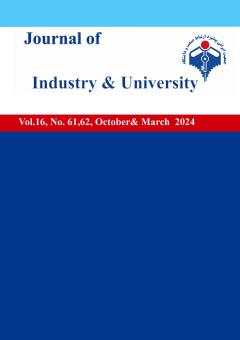Experimental Study of The Behavior of Geosynthetic Reinforced Soil Abutments Under The Effect of Loading Shape
Subject Areas : تخصصی
1 - Assistant Professor, Department of Civil Engineering, Faculty of Engineering, University of Zanjan, Zanjan, Iran
Keywords: Bridge Abutment, Reinforced Soil, Geosynthetics, Physical Modeling,
Abstract :
Using the reinforced soil method as a method to overcome the weak tensile strength of the soil with the help of metal or polymeric components with appropriate tensile strength is known as one of the fast and economical methods of stabilizing the slopes and building retaining walls. In this research, using physical modeling with high acceleration in a centrifuge, the behavior of reinforced soil abutments with a relatively high height under the effect of external overhead was evaluated. For this purpose, a reinforced soil slope with a height of 35 cm, equivalent to 1050 cm, was made in reality with a scale of 1:30 using a centrifuge and was subjected to loading at an acceleration of 30g. In the construction of reinforced soil walls, sandy soil and 6 layers of geosynthetic reinforcement with a thickness of 0.25 cm were used. The obtained results showed that the bearing capacity of foundations placed on reinforced soil abutments has a direct relationship with the shape of the foundation, and for foundations with the same width, the more the shape of the foundation changes from square to rectangular (the length of the foundation increases), the greater the bearing capacity. The final will be reduced. By examining soil reinforcement elements in different layers in terms of rupture and length increase, it was found that the rupture and increase is the highest for strip foundation and the lowest for square foundation. In other words, with an increase in the depth of the loading level, the impact of stress will increase and more reinforcing layers in depth will be affected by the loading
